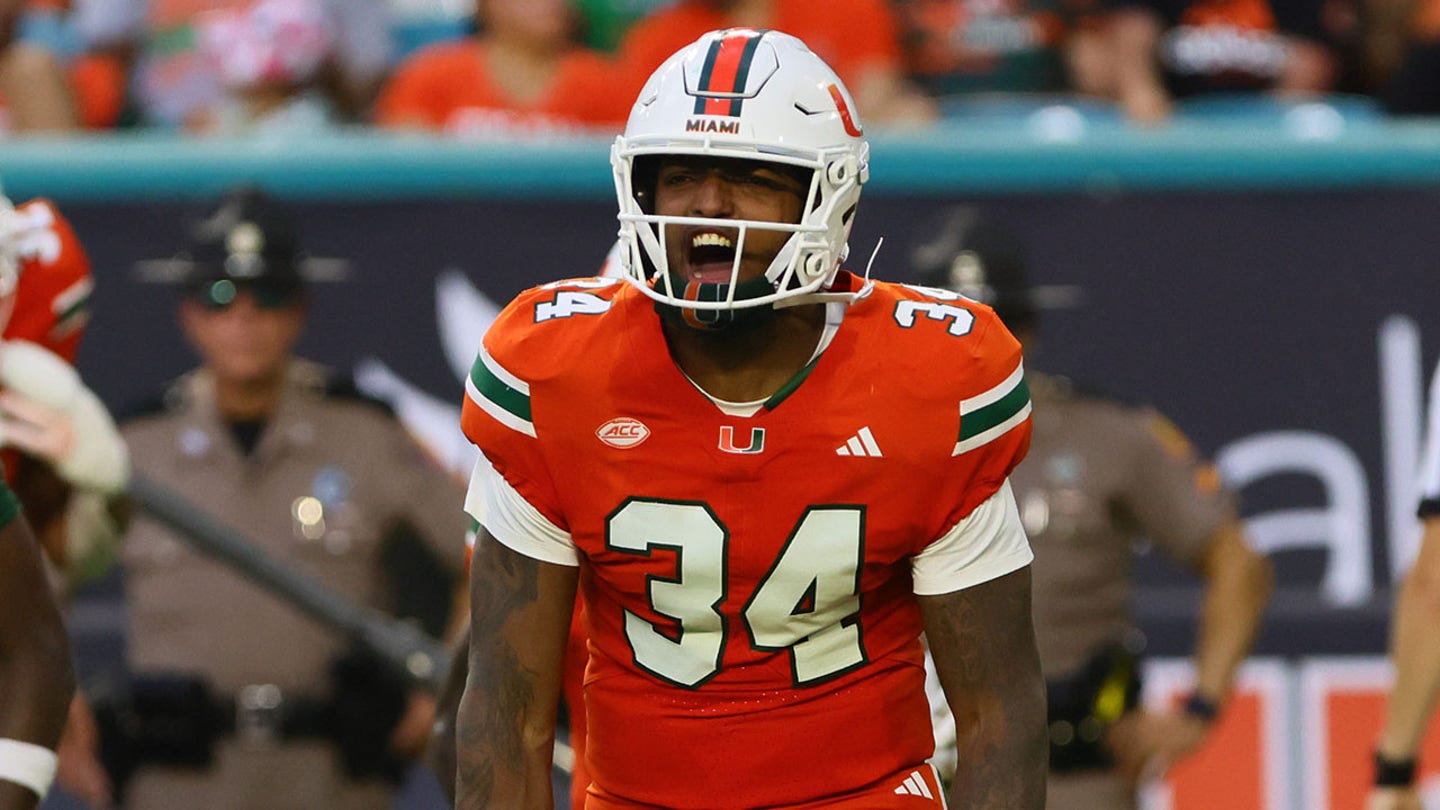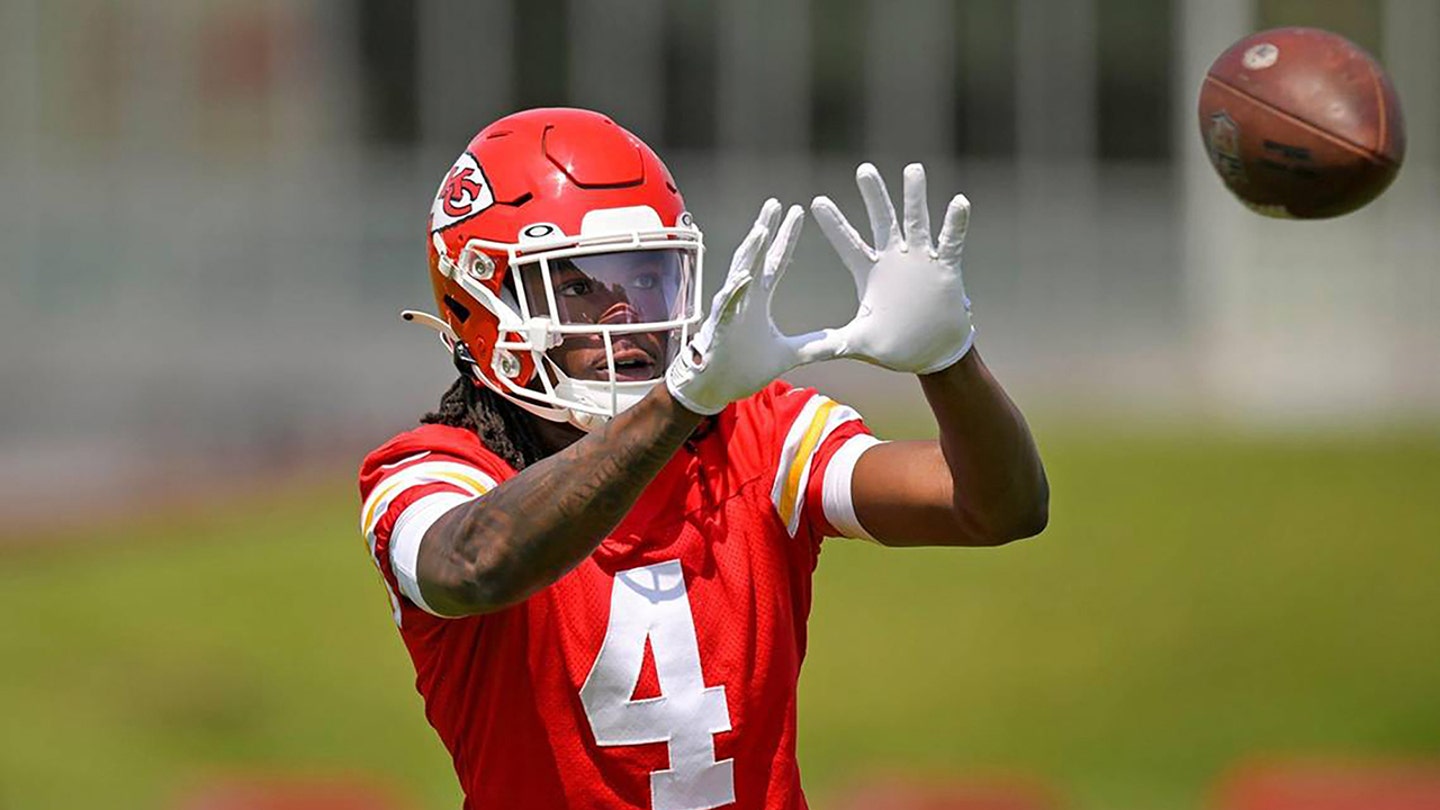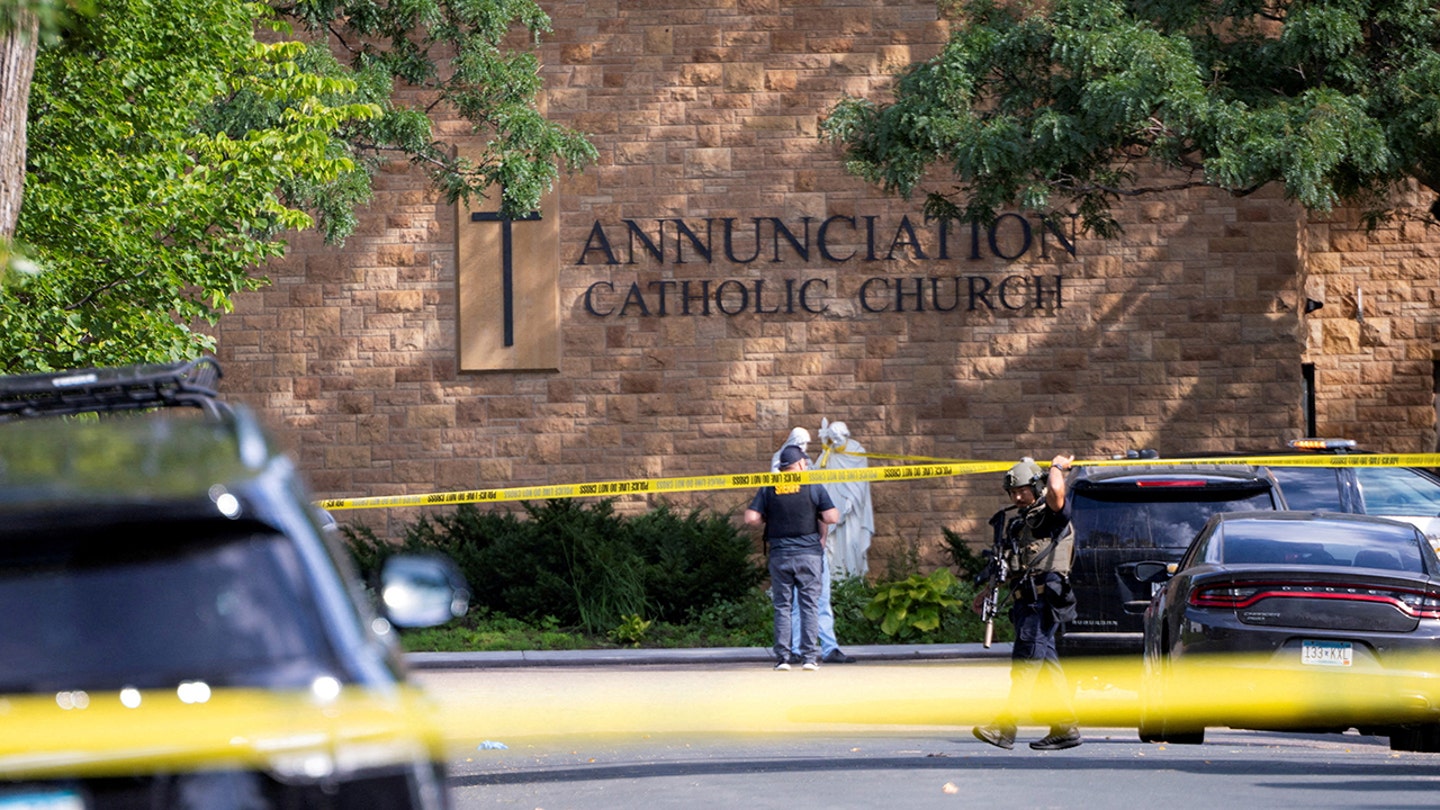
Florida State linebacker Ethan Pritchard in critical but stable condition after being shot
Entities mentioned:
- Ethan Pritchard: Self-preservation, Determination, Unity
- Florida State University (FSU): Duty, Unity, Professional pride
- Mike Norvell: Duty, Loyalty, Unity
- Gadsden County Sheriff's Office: Duty, Justice, Security
- Florida Department of Law Enforcement (FDLE): Justice, Security, Duty
Article Assessment:
Credibility Score: 75/100
Bias Rating: 50/100 (Center)
Sentiment Score: 30/100
Authoritarianism Risk: 25/100 (Generally Democratic)
Bias Analysis:
The article presents a balanced account of the incident, relying on official statements and including multiple perspectives. It refrains from speculation and maintains a neutral tone throughout the reporting.
Key metric: Violent Crime Rate
As a social scientist, I analyze that this incident highlights the ongoing issue of gun violence in the United States, even affecting high-profile college athletes. The shooting of a Florida State football player in his hometown underscores the pervasive nature of gun-related incidents and their potential impact on communities and institutions. The involvement of multiple law enforcement agencies and the university's response demonstrate the ripple effects of such events on various societal levels. This case may influence public perception of safety in college towns and potentially impact recruitment strategies for college athletic programs.

Miami football player Adarius Hayes surrenders to police on charges in fatal Florida crash
Entities mentioned:
- Adarius Hayes: Recklessness, Self-preservation, Fear
- Miami Hurricanes football team: Professional pride, Reputation, Obligation
- Largo Police: Justice, Duty, Public safety
Article Assessment:
Credibility Score: 85/100
Bias Rating: 50/100 (Center)
Sentiment Score: 25/100
Authoritarianism Risk: 20/100 (Strongly Democratic)
Bias Analysis:
The article presents a balanced account of the incident, citing police reports and official statements. It refrains from sensationalism and provides factual information without apparent partisan leanings.
Key metric: Violent Crime Rate
As a social scientist, I analyze that this incident likely impacts the violent crime rate metric. The charges of vehicular homicide against a high-profile college athlete draw attention to reckless driving and its fatal consequences. This case may influence public perception of road safety and potentially lead to stricter enforcement or legislative changes regarding traffic laws. The immediate suspension of Hayes by the university also demonstrates the broader implications for institutional accountability in sports programs.

Timberwolves star Julius Randle reacts to tragic Minneapolis mass shooting: 'We gotta be better'
Entities mentioned:
- Julius Randle: Moral outrage, Fear, Obligation
- Minnesota Timberwolves: Unity, Obligation, Compassion
- Minneapolis Police Chief Brian O'Hara: Duty, Indignation, Justice
- Gunman: Revenge, Moral outrage, Control
Article Assessment:
Credibility Score: 75/100
Bias Rating: 55/100 (Center)
Sentiment Score: 20/100
Authoritarianism Risk: 30/100 (Generally Democratic)
Bias Analysis:
The article presents a fairly balanced view, quoting various sources and providing factual details. While it leans slightly emotional due to the nature of the event, it maintains a neutral stance in reporting.
Key metric: Violent Crime Rate
As a social scientist, I analyze that this tragic event significantly impacts the violent crime rate metric for Minneapolis and potentially the broader state of Minnesota. The mass shooting at a church, targeting children and worshippers, represents a severe spike in violent crime that will likely influence both statistics and public perception of safety. The reaction from local sports teams and figures like Julius Randle demonstrates the community-wide impact and the potential for this event to spark discussions on gun control, mental health, and public safety measures. The incident may lead to increased security measures in places of worship and schools, potentially affecting community cohesion and trust. The emphasis on the shooter's deliberate targeting of children could also lead to heightened anxiety among parents and educational institutions, possibly influencing school attendance and community participation rates in the short term.

NFL suspends Chiefs' Rashee Rice six games for personal conduct policy violation
Entities mentioned:
- Rashee Rice: Self-preservation, Obligation, Moral outrage
- NFL: Justice, Control, Professional pride
- Kansas City Chiefs: Competitive spirit, Professional pride
- Dallas County District Attorney's Office: Justice, Duty
- Judge Sue L. Robinson: Duty, Justice
Article Assessment:
Credibility Score: 75/100
Bias Rating: 50/100 (Center)
Sentiment Score: 35/100
Authoritarianism Risk: 30/100 (Generally Democratic)
Bias Analysis:
The article presents a balanced account of the incident and its consequences, including statements from multiple parties involved. It refrains from editorializing and focuses on factual reporting of events and official statements.
Key metric: Violent Crime Rate
As a social scientist, I analyze that this incident and its aftermath highlight the intersection of professional sports, personal conduct policies, and the criminal justice system. The NFL's six-game suspension of Rice demonstrates the league's attempt to maintain its image and enforce behavioral standards among players. The legal consequences and public statement from Rice indicate a potential deterrent effect on similar behavior by other athletes. However, the flexibility in Rice's jail sentence and the deferred probation suggest a degree of leniency that may be influenced by his status as a professional athlete. This case may impact public perception of accountability for high-profile individuals and potentially influence the violent crime rate by setting an example of consequences for reckless behavior.

WNBA star Sophie Cunningham sends prayers to victims of 'pure evil' Minneapolis shooting
Entities mentioned:
- Sophie Cunningham: Righteousness, Moral outrage, Compassion
- FBI: Justice, Duty, Security
- Kash Patel: Duty, Justice, Professional pride
- Robin/Robert Westman: Revenge, Moral outrage, Recognition
- Brian O'Hara: Duty, Security, Professional pride
Article Assessment:
Credibility Score: 75/100
Bias Rating: 55/100 (Center)
Sentiment Score: 25/100
Authoritarianism Risk: 35/100 (Generally Democratic)
Bias Analysis:
The article presents a relatively balanced account of the incident, including multiple perspectives and official sources. However, the focus on the shooter's gender identity change might be seen as unnecessary emphasis, potentially skewing the narrative.
Key metric: Violent Crime Rate
As a social scientist, I analyze that this article highlights a significant violent crime incident that impacts the national Violent Crime Rate metric. The mass shooting at a Catholic school in Minneapolis, resulting in fatalities and multiple injuries, represents a severe case of violence that will likely influence crime statistics and public perception of safety. The involvement of the FBI in investigating this as a potential hate crime against Catholics adds another layer of complexity to the incident, potentially affecting inter-community relations and religious tensions. The shooter's apparent manifesto and disturbing online content suggest premeditation and ideological motivations, which could have broader implications for discussions on gun control, mental health, and online radicalization. The reaction from public figures like Sophie Cunningham demonstrates the widespread impact of such events on society, influencing public discourse and potentially policy responses.

Chicago leaders ‘have a problem with the truth’ about crime: Gianno Caldwell
Entities mentioned:
- Gianno Caldwell: Justice, Moral outrage, Influence
- Jackie Guider: Justice, Moral outrage, Grief
- Chicago leaders: Control, Power, Self-preservation
- Fox News: Influence, Competitive spirit, Recognition
Article Assessment:
Credibility Score: 55/100
Bias Rating: 70/100 (Lean Right)
Sentiment Score: 30/100
Authoritarianism Risk: 35/100 (Generally Democratic)
Bias Analysis:
The article leans right due to its presentation on Fox News and the framing that criticizes city leadership. The use of emotive language and personal stories suggests a narrative that aligns with conservative critiques of urban governance.
Key metric: Violent Crime Rate
As a social scientist, I analyze that this article highlights ongoing concerns about crime in Chicago and suggests a disconnect between official narratives and public perception. The involvement of a political analyst and a victim's mother indicates a push for accountability and change in the city's approach to crime prevention and reporting. The suggestion of potential federal intervention implies a lack of confidence in local leadership's ability to address the issue effectively. This focus on Chicago's crime problem could impact national perceptions of urban safety and governance.

Burgum says Trump deploying National Guard to Democratic-led cities is not political: ‘He’s not targeting anything’
Entities mentioned:
- Doug Burgum: Loyalty, Duty, Professional pride
- Donald Trump: Control, Power, Influence
- Democratic Party: Self-preservation, Indignation, Justice
- Republican Party: Law and order, Control, Power
- JB Pritzker: Indignation, Self-preservation, Autonomy
- National Guard: Duty, Security, Control
Article Assessment:
Credibility Score: 65/100
Bias Rating: 55/100 (Center)
Sentiment Score: 35/100
Authoritarianism Risk: 65/100 (Authoritarian Tendencies)
Bias Analysis:
The article presents both Republican and Democratic viewpoints, but gives slightly more space to the administration's perspective. It includes some fact-checking of claims, indicating an attempt at balanced reporting.
Key metric: Violent Crime Rate
As a social scientist, I analyze that this article highlights the increasing politicization of law enforcement and public safety measures in the United States. The deployment of the National Guard to Democratic-led cities by a Republican president is framed as a non-partisan move to combat crime, but the underlying political tensions are evident. This action could potentially impact the violent crime rate, but the effectiveness is questionable given the complex nature of urban crime and the potential for increased tensions between federal and local authorities. The article also reveals a growing divide in perceptions of crime and appropriate responses between the two major political parties, which could have long-term implications for national unity and governance.

Gianno Caldwell mulls Senate bid as Chicagoans are 'begging for change' on crime woes
Entities mentioned:
- Gianno Caldwell: Justice, Ambition, Duty
- Illinois Republican Party: Power, Influence, Security
- Donald Trump: Control, Power, Security
- Muriel Bowser: Freedom, Righteousness, Wariness
- Dick Durbin: Legacy, Duty, Self-respect
Article Assessment:
Credibility Score: 70/100
Bias Rating: 65/100 (Lean Right)
Sentiment Score: 35/100
Authoritarianism Risk: 55/100 (Mixed/Neutral)
Bias Analysis:
The article leans slightly right, focusing more on Republican perspectives and Trump's approach to crime. While it includes some opposing views, it gives more space and detail to conservative positions on law enforcement.
Key metric: Violent Crime Rate
As a social scientist, I analyze that this article highlights the growing concern over crime rates in major U.S. cities, particularly Chicago. Gianno Caldwell's potential Senate bid, motivated by personal tragedy and a desire for change, reflects a broader political shift towards prioritizing law and order. The article suggests a tension between federal intervention in local policing and concerns about civil liberties. This focus on crime could significantly impact the violent crime rate metric by potentially leading to more aggressive law enforcement policies. However, the effectiveness and potential consequences of such approaches remain debatable, as evidenced by the contrasting views presented in the article.

GOP governors are sending troops to DC. Their states have 10 cities with higher crime rates
Entities mentioned:
- Republican Governors: Loyalty, Political ambition, Influence
- President Donald Trump: Power, Control, Legacy
- DC Mayor Muriel Bowser: Duty, Security, Professional pride
- Democratic lawmakers and activists: Moral outrage, Justice, Righteousness
- Sen. Thom Tillis: Criticism, Duty, Wariness
Article Assessment:
Credibility Score: 75/100
Bias Rating: 40/100 (Lean Left)
Sentiment Score: 35/100
Authoritarianism Risk: 55/100 (Mixed/Neutral)
Bias Analysis:
The article leans slightly left, evidenced by its critical stance towards Republican governors and Trump's actions. It provides contrasting viewpoints but gives more space to critics of the troop deployments.
Key metric: Violent Crime Rate
As a social scientist, I analyze that this article highlights the complex interplay between federal and state politics, crime statistics, and resource allocation. The deployment of National Guard troops to Washington, DC by Republican governors, despite their own states having cities with higher crime rates, suggests political motivations rather than a genuine focus on addressing crime. This action may be seen as an attempt to support President Trump's agenda and gain political favor, rather than addressing local crime issues. The article raises questions about the effectiveness of such deployments in reducing crime and the potential negative impacts on the communities these troops are leaving behind. It also underscores the importance of data-driven policy-making and the need for a more nuanced approach to addressing crime that goes beyond simply increasing law enforcement presence.

Trump says Chicago next up for federal crime crackdown
Entities mentioned:
- Donald Trump: Power, Control, Influence
- Muriel Bowser: Self-preservation, Control, Duty
- Brandon Johnson: Self-preservation, Duty, Security
- JB Pritzker: Moral outrage, Duty, Security
- Mike Johnson: Loyalty, Power, Influence
- John Thune: Loyalty, Power, Influence
Article Assessment:
Credibility Score: 65/100
Bias Rating: 55/100 (Center)
Sentiment Score: 30/100
Authoritarianism Risk: 70/100 (Authoritarian Tendencies)
Bias Analysis:
The article presents multiple viewpoints, including Trump's statements and responses from local officials. However, it leans slightly towards skepticism of Trump's claims, particularly in fact-checking crime statistics.
Key metric: Violent Crime Rate
As a social scientist, I analyze that this article highlights a potential shift in federal-local power dynamics regarding law enforcement. Trump's proposed actions in Chicago, following interventions in Washington D.C., suggest an expansion of federal authority over local policing. This approach could significantly impact the violent crime rate, either positively through increased law enforcement presence or negatively by escalating tensions. The conflicting narratives between federal and local officials about crime statistics and the effectiveness of interventions raise questions about data integrity and the actual impact on public safety. The president's rhetoric and actions also indicate a centralization of power that could alter the traditional balance between federal and local governance in law enforcement matters.